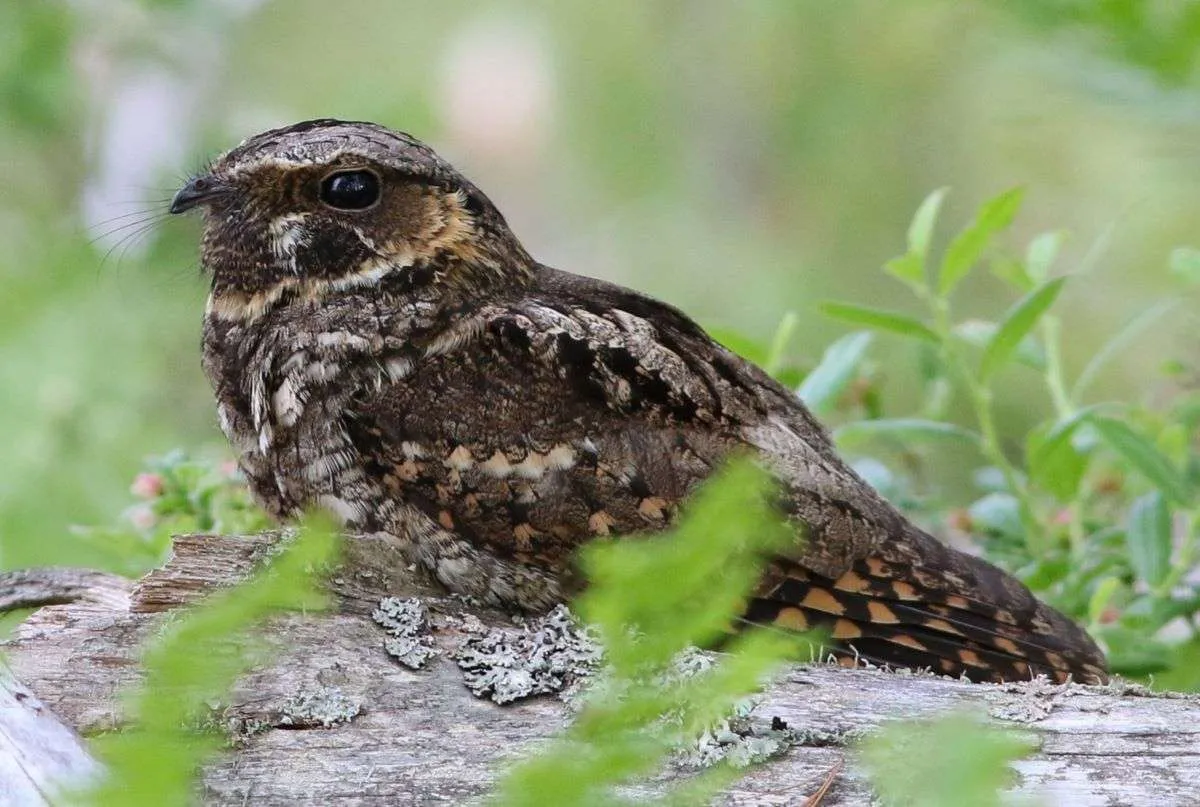Out in the Woods
- June 7th 2024
- Out in the Woods

Eastern whip-poor-wills nest directly on the ground.
Photo: Dominick Fenech, eBird
Twilight Bird Becoming Uncommon
By Kevin McKeon, Maine Master Naturalist
Legends of the whip-poor-will, or whip-o-will, begin with early Native American lore that the birds’ unique and unmistakable wailing song is an omen of death; the tale then morphed to the idea that the singing can capture departing souls of the dying.
Whip-poor-wills live in thick, young, dry, deciduous or mixed woodlands, especially near fields and other open areas. The size of the forest opening is an important factor for the birds’ habitat. Shade and small amounts of ground cover are also important in whip-poor-will nesting habitat. During their migrations to the southern tip of Florida, Mexico, and Central America in early September or October – and their return in April or May – they’ll frequent forested habitats. These birds live up to 15 years.
The male establishes and maintains his territory by calling along the perimeter and by chasing off intruders while making aggressive calls and hisses with raised wings and mouth open. Whip-poor-wills are generally solitary, but they’ll form small flocks during migration. They eat mostly at night, flying to catch their insect prey, including mosquitoes, flying beetles, ants, grasshoppers, and crickets, but moths make up most of their diet. They sometimes search rotten logs and leaves for ants, caterpillars, beetles, worms, and other insects. The cycle of forest life dictates that these birds get preyed upon by skunks, raccoons, snakes and coyotes.
Whip-poor-wills’ mating and nesting behavior is timed in such a way that their chicks hatch a week or so prior to full moons, allowing the parents to forage all night long under the moonlight to feed their young. The eggs – usually two of them – are incubated by both parents. After hatching, both feed their young. While one parent is finding food, the other is protecting the nesting site. These birds don’t build nests but lay their eggs directly on the forest floor in leaf litter, bare soil, or sand, their body weight and incubation movements sometimes forming a shallow depression. In about eight days, the hatchlings molt into well-camouflaged plumage. The female then will leave to start a new clutch nearby, and the male will care for the chicks. Their camouflaged plumage, along with the adult behavior of feigning injury while leaving the nesting site, helps to protect the young birds from predators. After about three weeks, the chicks are on their own.
Watch a singing whip-poor-will here, among other pictures and videos: here.
The singing of the Eastern whip-poor-will is becoming rare; a 2% yearly decline in their population, mostly due to habitat loss, has resulted in an over 60% population loss in the past 50 years or so. The loss of natural habitat has caused these birds to learn that roads are good areas to forage for insects at night, resulting in an increasing mortality from vehicles.
So, drive carefully along our rural roads, especially at night. Perhaps stop along a roadside field for a short minute or so, hoping to hear the wailing of a wondrous creature of the twilight world, the Eastern whip-poor-will.






